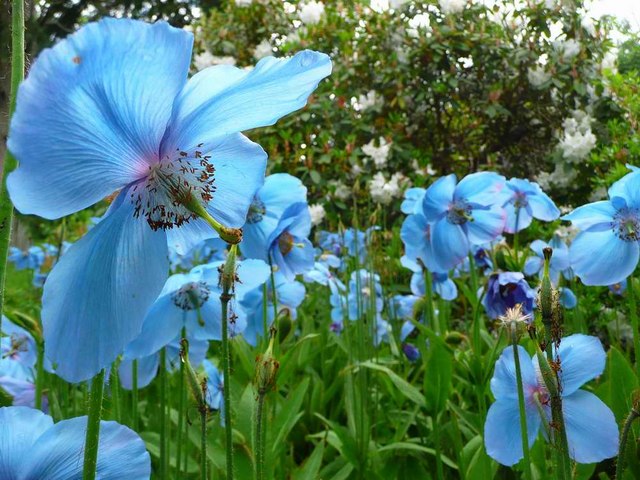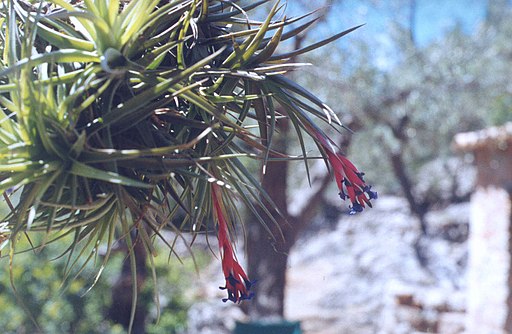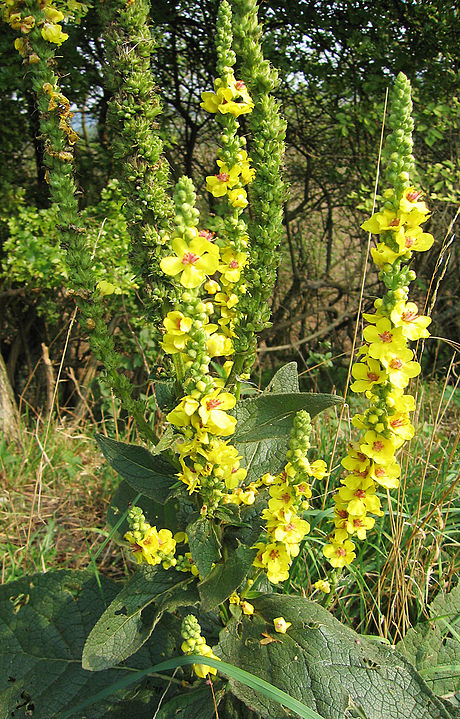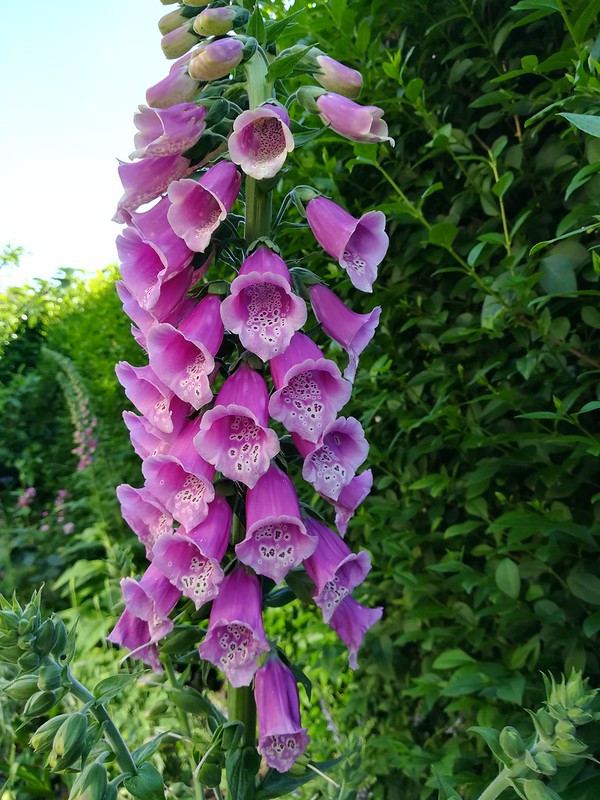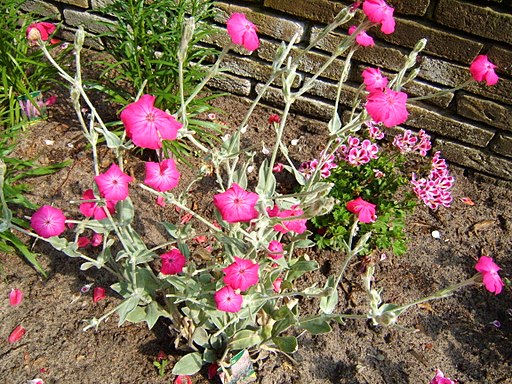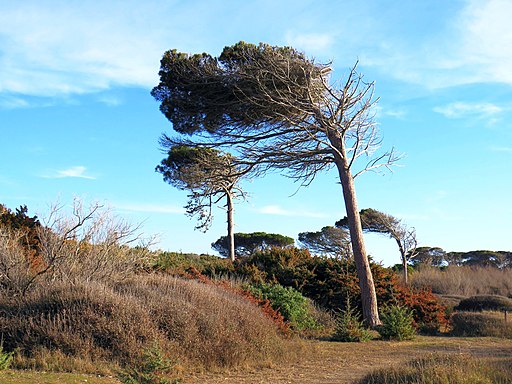Watering Well
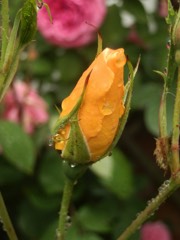
On this page I will look at ways in which you can:
- Minimise the need for heavy carrying or for long periods spent standing over your plants with a hosepipe.
- Ensure that your plants receive the water (and nutrients) that they need.
- Avoid wasting precious water resources.
I will also look at the role that water plays in good plant growth. Understanding that different plants have different needs will help you to avoid the disappointment of a dried out or mouldy drowned plant.
The two key things to remember are:
- Match your plants to the conditions they prefer. Most plant labels and seed packs will have this guidance on them, sometimes in the form of symbols.
- Water smart: Take steps to reduce unnecessary water loss from the soil using the information and ideas below.
Use the links below to skip between sections.
Top Tips for Watering Well
As with all other gardening tasks, think before you act.
- Think about where your water source is to reduce the distance you have to carry water. Connect water butts to guttering near your plants. Do you have an outside tap? If it’s too far from your plants, can you attach a permanent hose without creating a trip hazard?
- Improve your soil to hold more water and increase the drainage of excess.
- Choose plants to suit the conditions.
- Reduce unnecessary water loss through mulching and planting for ground cover.
- Avoid lots of small containers which need frequent watering. Plant in the ground where possible or use as big a pot as you can afford. Look out for useful containers to repurpose but make sure they have enough drainage holes.
- Set up a self-watering system for containers to reduce the workload.
- Water well and less often.
Read on for more details
Understanding the Role of Water
There is a good reason why the archetypal image representing gardening is a watering can. Just like you, plants need to keep well hydrated for good health. Water makes up the greater portion of every cell in a living organism and for many plants without woody stems, provides the support to hold them upright through sheer water pressure. A water problem becomes very obvious when the plant wilts. Water is also vital for transporting dissolved nutrients between cells, whether in your blood, in the sap of a tree or the juicy root of a carrot. You might become anaemic while your plant becomes chlorotic.
In schools, children are taught that plants need soil, sunshine and water but not that they also need food. Many people are unaware that water can be a problem if a plant receives too much, or at the wrong time, or if a plant in a container receives nothing but water and sunshine and is never fed. This may sound daunting, but a little planning and research before you buy a plant or packet of seeds can be fun as well as helping to avoid problems later.
In schools, children are taught that plants need soil, sunshine and water but not that they also need food. Many people are unaware that water can be a problem if a plant receives too much, or at the wrong time, or if a plant in a container receives nothing but water and sunshine and is never fed. This may sound daunting, but a little planning and research before you buy a plant or packet of seeds can be fun as well as helping to avoid problems later.
The Right Plant in the Right Place
In the garden, you can reduce your workload by using plants which are adapted for the area in which you plant them. I wasted a lot of time and money trying to make Himalayan poppies grow in the thin dry soil of high moorland in the Scottish Borders when what they wanted was the moist rich soil and shade of a woodland.
Pay attention to what is already thriving or struggling in your garden and what the conditions are like. Is a flowering plant struggling in the deep, dark, dry shade of a large tree? Are annuals in containers drying out in hot sun? Does a plant in a boggy area have sickly looking yellow leaves because it is drowning? Try to find out what the plants are and what they need. Think about moving or changing the plants rather than exhausting yourself trying to make a dry spot damp or insisting on having bright coloured annuals in deep dry shade.
In the following section I will take you on a quick tour of some very different plants to illustrate the point that a level of moisture that one plant thrives on may be death to another. Understanding the particular needs of your plants, and matching them to your own ability to provide ideal growing conditions, is essential if you are to avoid your plants transforming from a joy to a burden.
Plants That Love Dry Conditions
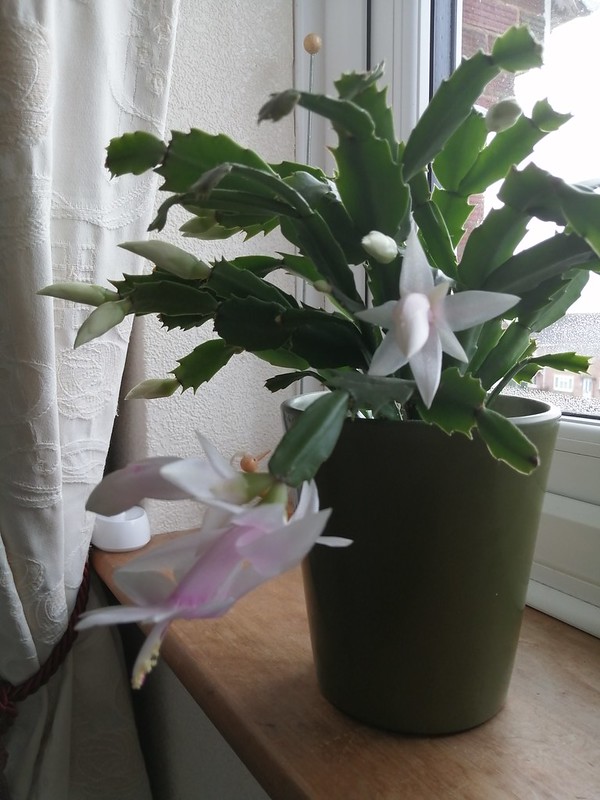
A Christmas cactus, descendant of my grandmother's plant with all the love and memories that carries.
Let’s start with a plant that is synonymous with the dryness of deserts, the cactus. They are used to arid conditions and have evolved to store water in their swollen stems. Even so, if you leave a cactus without water for long enough it will use up that store and become flaccid. Most of us will have seen distressed Christmas cacti in offices and homes, floppy, dusty and a deep reddish-green due to a lack of food as well as water. Others may reach this state through zealous overwatering, which encourages moulds and rot, damaging the roots so they can’t take up the available water and nutrients.
Never assume that a wilted plant needs more water. More houseplants die through loving overwatering than neglect. Always check the soil first.
During the summer, when they are in a growing phase, cacti may need watering once a week, especially if they are on a sunny windowsill where the heat will evaporate their moisture very quickly. Pour the water into their saucer or outer container, rather than onto the compost surface, and it will be drawn up into the compost instead of evaporating off the surface and into the air. Only give enough to make the compost damp, never wet. A thin covering of fine grit, or a mulch of decorative stones, also helps to reduce evaporation and keep the water where it is needed. During the autumn and winter, when there is no growth, cacti use very little water so only water them once the soil is very dry.
Epiphytes are even more extreme in their preferences, growing without soil at all, their roots dangling in the moist air of rainforests where the constant misting provides them with all the water they need. They can make lovely houseplants, needing little more than an occasional spray, or to be located in a bathroom where they will appreciate the extra humidity. For more advice on growing these plants try this site.
Never assume that a wilted plant needs more water. More houseplants die through loving overwatering than neglect. Always check the soil first.
During the summer, when they are in a growing phase, cacti may need watering once a week, especially if they are on a sunny windowsill where the heat will evaporate their moisture very quickly. Pour the water into their saucer or outer container, rather than onto the compost surface, and it will be drawn up into the compost instead of evaporating off the surface and into the air. Only give enough to make the compost damp, never wet. A thin covering of fine grit, or a mulch of decorative stones, also helps to reduce evaporation and keep the water where it is needed. During the autumn and winter, when there is no growth, cacti use very little water so only water them once the soil is very dry.
Epiphytes are even more extreme in their preferences, growing without soil at all, their roots dangling in the moist air of rainforests where the constant misting provides them with all the water they need. They can make lovely houseplants, needing little more than an occasional spray, or to be located in a bathroom where they will appreciate the extra humidity. For more advice on growing these plants try this site.
An epiphyte, Tillandsia aeranthos, growing in Mallorca
As for garden plants that love dry spots, lychnis, mullein and foxglove love to have their roots in the dry soil under a hedge or against an east-facing wall, sheltered from the rain-bearing south-westerly winds. These plants often have furry leaves, to reduce water loss from evaporation.
Plants That Love Moist Conditions
At the other end of the scale, watercress thrives in stream and river margins with its roots in waterlogged soil. Without enough moisture it will throw up flowers in desperation to establish seeds for the next generation before it dies. This is known as ‘bolting’. You can see the same effect in spinach, rocket, cilantro and other leafy greens which hate hot dry conditions.
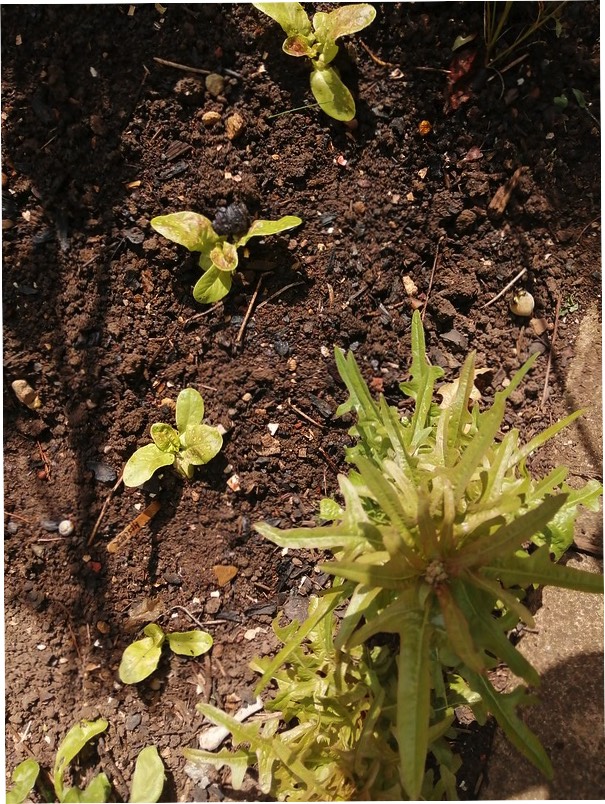
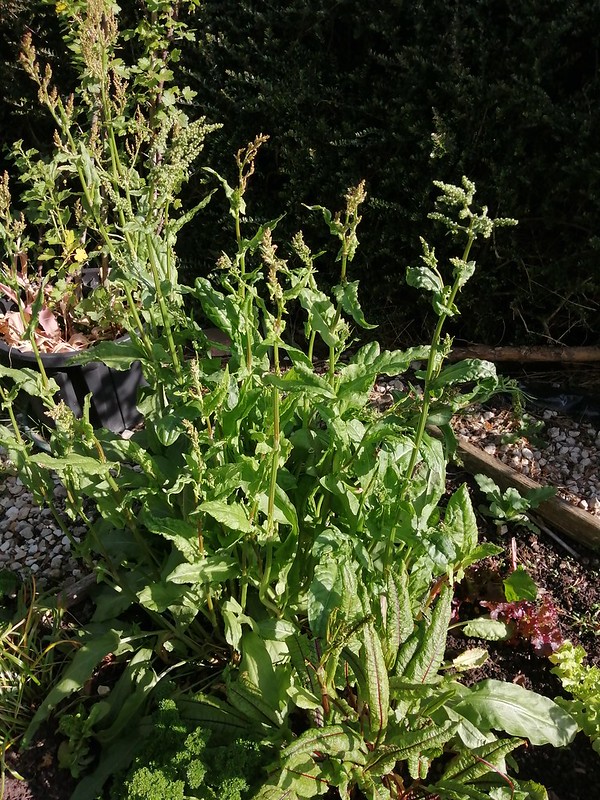
Left, lettuce seedlings next to a tall lettuce of the same variety which has bolted. Note the budding flower in the centre.
Right, bolted sorrel. If these flowers look familiar it is because sorrel is part of the same family as the common perennial 'weed', dock.
Right, bolted sorrel. If these flowers look familiar it is because sorrel is part of the same family as the common perennial 'weed', dock.
These leafy crops are all best planted in moist shady spots either early in the year, before the temperatures soar, or in the early autumn while the soil is still warm but the sun is less harsh and drying. These late-sown greens can keep producing leaves well into the winter if you protect them against frosts.
While leafy greens do well in more shady areas, many other plants need plenty of direct sunshine in order to store up enough energy for showy flowers, swollen roots and tubers (potatoes, swedes, celeriac etc), beans or peas. This is more of a challenge as they also need consistently moist soil. See below for tips on achieving this.
While leafy greens do well in more shady areas, many other plants need plenty of direct sunshine in order to store up enough energy for showy flowers, swollen roots and tubers (potatoes, swedes, celeriac etc), beans or peas. This is more of a challenge as they also need consistently moist soil. See below for tips on achieving this.
Deep Diving Versus Shallow Root Systems
The type of roots that a plant has is key to understanding its water needs. Deep-rooted biennials like carrots and parsnips, or perennials like artichokes, cope with drought by diving down to find water deep under the surface. Sprinkling little and often on the surface will encourage their roots to follow the water and be shallow and branching, prone to drying out quickly on hot or windy days. These plants prefer an occasional dousing with a large amount of water that penetrates deep into the soil around the root. Once well established, perennials should only need watering in very dry summers. This makes them a great choice for gardeners who can’t cope with lots of heavy watering.
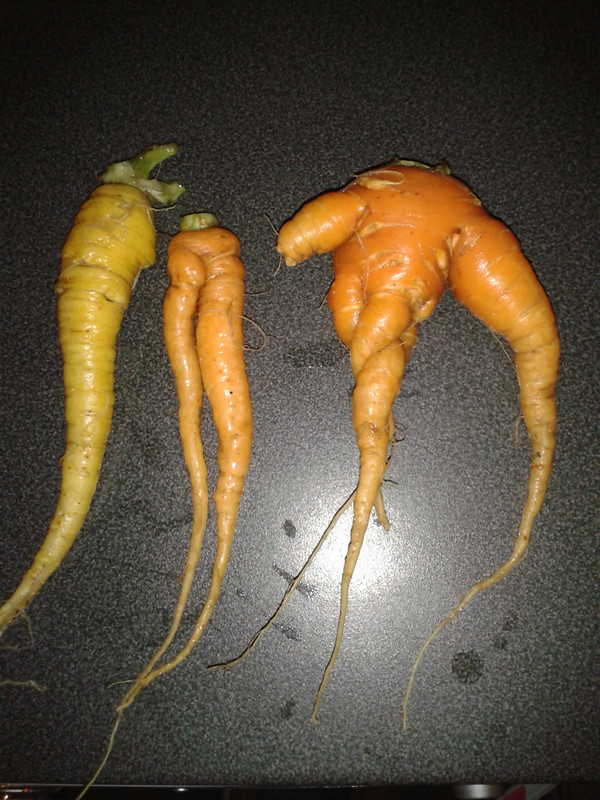
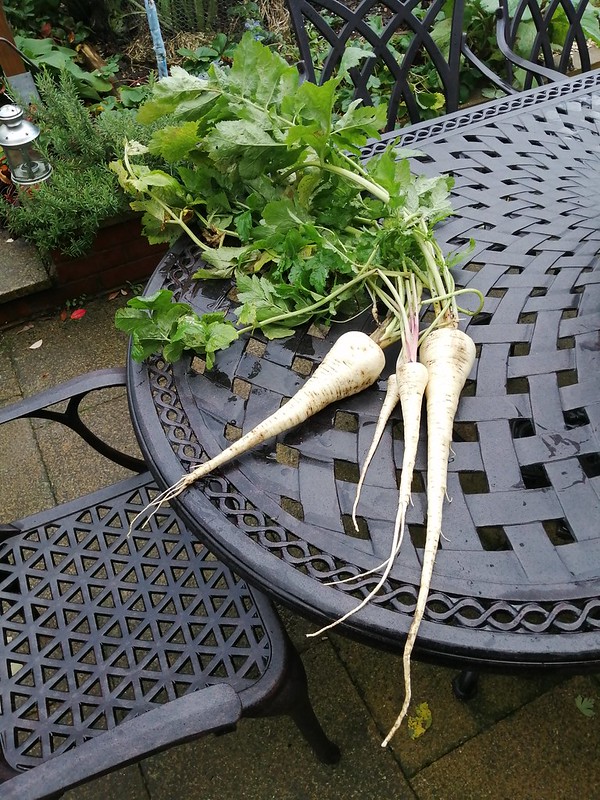
Strange shapes are common in carrots (left) and parsnips (right) as the roots fork around stones or wander in search of water and nutrients. For straight roots, grow them in raised beds filled with compost and seived top soil and water deeply once a week at most.
Shallow rooted annuals like lettuce, watercress or pansies have many fibrous roots near the surface, which can’t reach deep water and must have moist (not saturated) soil at all times. These can be hard work to keep hydrated, so grow them near your water source to minimise carrying and choose a sheltered spot with soil that contains plenty of organic matter, which will hold the water well.
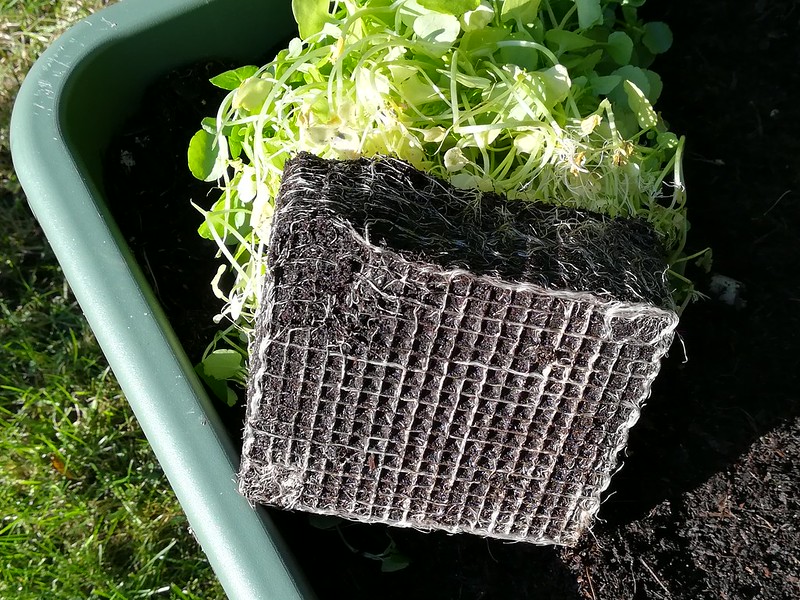
Fine root systems need consistently damp soil near the surface or they will dry out. This is watercress, bought from a supermarket.
To reduce the need for watering plants in sunny spots give them a really good soak when you plant them out and then add a thick layer of mulch, which will prevent that moisture from evaporating. This means laying a layer of compost, bark chippings or even straw over the soil. See my Managing Weeds page for more on this. You can also ensure that any water you give your plants stays accessible to them by scraping the surrounding soil into a shallow bowl shape to funnel the water, or any rain, towards the stem rather than spreading away across the soil surface.
Providing Shelter
Shelter Your Plants
Shelter is also important to keep your plants hydrated. Strong winds evaporate water from leaves very quickly. This can leave plants wind burned since they simply can’t draw the moisture up fast enough to replace what is being lost. Plants that have evolved for windy situations tend to have very coarse, narrow leaves with thick waxy coatings, to keep the moisture in (think of the leaves of pine trees or pampas grass) or to grow low and small in what shelter is available.
Windswept pines and low level scrub at the seaside in Tuscany.
If you want to grow plants in a very windy spot, check which direction the wind usually comes from and plant a hedge / screen, or erect a fence, upwind of your site to slow the wind down. Make sure your fence isn’t a solid type or the wind will whip up and over, causing great damage as it comes down on the other side. Choose plants that are adapted to cope with wind and, if you don’t have a permanent windbreak in place, be prepared to put up some temporary form of shelter to protect your young plants while they establish themselves. Steel fencing pins and windbreak fabric should do the job and be easy to remove afterwards. Try this site for more detailed information on effective windbreaks.
Shelter Your Soil
Your soil also needs shelter. As a rule it is not a good idea to have a bare soil surface exposed to the elements as the sun will dry it out, the wind will blow away dry organic matter and nutrients will wash away with the rain.
Aim to keep your soil well planted so that there are leaves to shade the surface and roots to bind the soil together. Think about growing low spreading plants under your taller ones for ground cover. Hardy geraniums can look beautiful scrambling through the base of roses, squashes can be planted as an under-storey to climbing beans, alpine strawberries or herbs like marjoram form dense ground cover with the extra benefits of delicious crops.
Aim to keep your soil well planted so that there are leaves to shade the surface and roots to bind the soil together. Think about growing low spreading plants under your taller ones for ground cover. Hardy geraniums can look beautiful scrambling through the base of roses, squashes can be planted as an under-storey to climbing beans, alpine strawberries or herbs like marjoram form dense ground cover with the extra benefits of delicious crops.
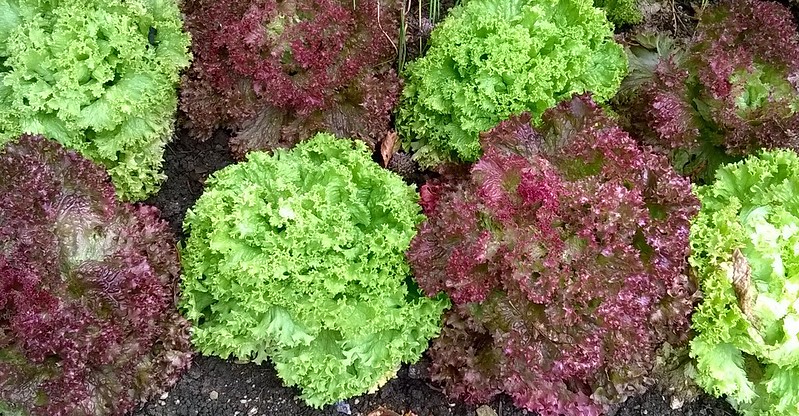
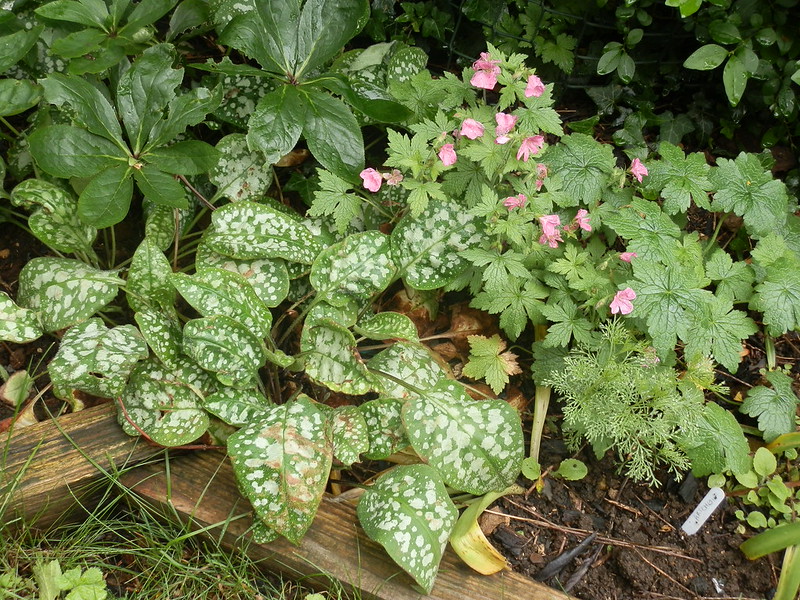
Left, Close-planted lettuces fill all the available space.
Right, hellebores, pulmonaria and hardy geraniums cover the ground beneath a plum tree.
Right, hellebores, pulmonaria and hardy geraniums cover the ground beneath a plum tree.
In the late summer, think about planting emptying veg beds with a green manure to protect the soil over the winter. If plant cover isn’t possible, think about moving to a low-energy no-dig system and protect your soil with a layer of mulch.
Improve Your Soil
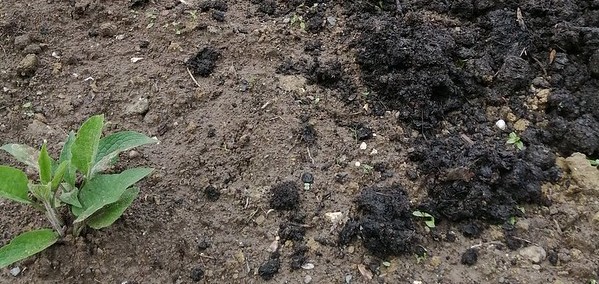
Home made compost spread over thin topsoil to add organic bulk, improve drainage and boost nutrition. The plant to the left is comfrey, an excellent source of free, home-made plant feed (see below).
Over recent decades, gardening magazines have swung wildly between articles promoting arid or tropical gardens for ‘global warming’, to bog gardens in response to years of flood. We are now beginning to understand that the reality of climate change is not a simple shift to hot and dry or cold and damp, but to a world of extremes in which we have long periods of wet weather, which saturate the ground, followed by months of drought. The key to managing these extremes lies not in designing a garden for one or the other, but in managing our soil to store as much moisture as possible against times of plenty without becoming waterlogged. For more on this, have a look at my page Love Your Soil. This is the single most important thing you can do for your plants. Healthy soil creates healthy plants, which are much better able to cope with periods of drought or flood.
Smart Watering
When to Water: morning or evening

Blackbird time, morning or evening: a chance to water quietly in your garden and enjoy the peaceful company of the birds.
It is important to think about when to water your plants. Outside, watering in the middle of the day is a waste of your precious energy and water since much of the water will evaporate in the heat. Think about watering in the mornings instead; there is something really special about getting up early to potter around with a watering can when the world is quiet and it’s just you and the birds. Dusk is also a lovely time to water, to take some quiet time to yourself and immerse yourself in your garden. However, it does leave the soil damp overnight so is not recommended if you have a slug problem. Damp soil makes it much easier for them to get about.
Inside too, the time of day makes a difference since wet compost becomes much colder as temperatures drop overnight, particularly on a windowsill. A good example of this is basil, a tricky plant, which needs plenty of water but will sulk if its roots become too wet or cold. Think of it as a fellow CFE / ME sufferer needing an ever-present water-bottle and extra pair of socks. It’s a plant of sunny climates which hates having cold feet, so watering at night as temperatures drop threatens the plant. Even in an apparently warm house a sunny windowsill can get cold at night, so imagine your basil going to bed in a cold bedroom in damp socks! On the plus side, basil is amazingly resilient: while it will wilt alarmingly when its roots dry out, water it quickly and it will bounce back up again. For a really happy plant, keep it somewhere close, like a sunny kitchen window-sill where you can check in each morning to see if it needs watering.
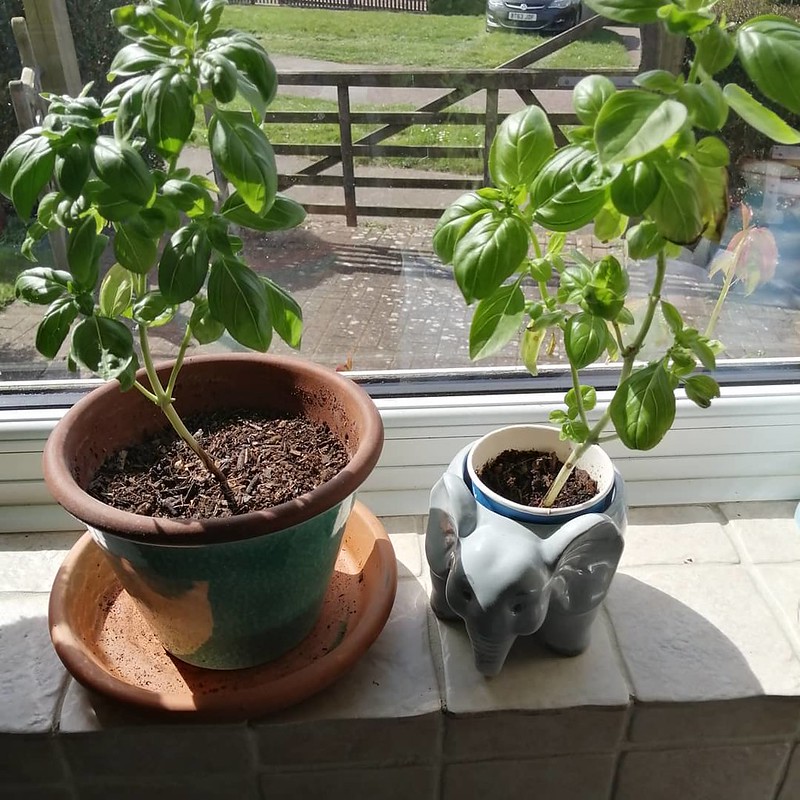
Basil, a plant that hates 'cold feet'
When to Water: when your soil is dry
Checking is the key to good watering. Get your hands in the soil and feel it. Is it dry and dusty or nice and damp? Does your plant really need watering? Is it dry despite a recent spell of rain? Potatoes are an excellent example of this problem, having a dense canopy of leaves which acts like an umbrella. The soil beneath can be very dry even after rain, leading to a crop of tiny potatoes if you don’t get your watering can up close under the leaves.
Outside, most of your plants will be dormant over winter, so even in a dry winter they won’t need extra water. Indoors, in a greenhouse or polytunnel is another matter, so don’t abandon your plants over winter, assuming they will be fine. Unless you are growing cacti, compost or soil always needs some moisture to sustain the microbial life as well as the plants it supports. Check occasionally by sticking your finger into the soil to see if you can feel any dampness. If it is dry to the depth of your finger’s first joint, give it a good water but not enough to make it sodden.
Outside, most of your plants will be dormant over winter, so even in a dry winter they won’t need extra water. Indoors, in a greenhouse or polytunnel is another matter, so don’t abandon your plants over winter, assuming they will be fine. Unless you are growing cacti, compost or soil always needs some moisture to sustain the microbial life as well as the plants it supports. Check occasionally by sticking your finger into the soil to see if you can feel any dampness. If it is dry to the depth of your finger’s first joint, give it a good water but not enough to make it sodden.
When to Water: when your plants are fruiting
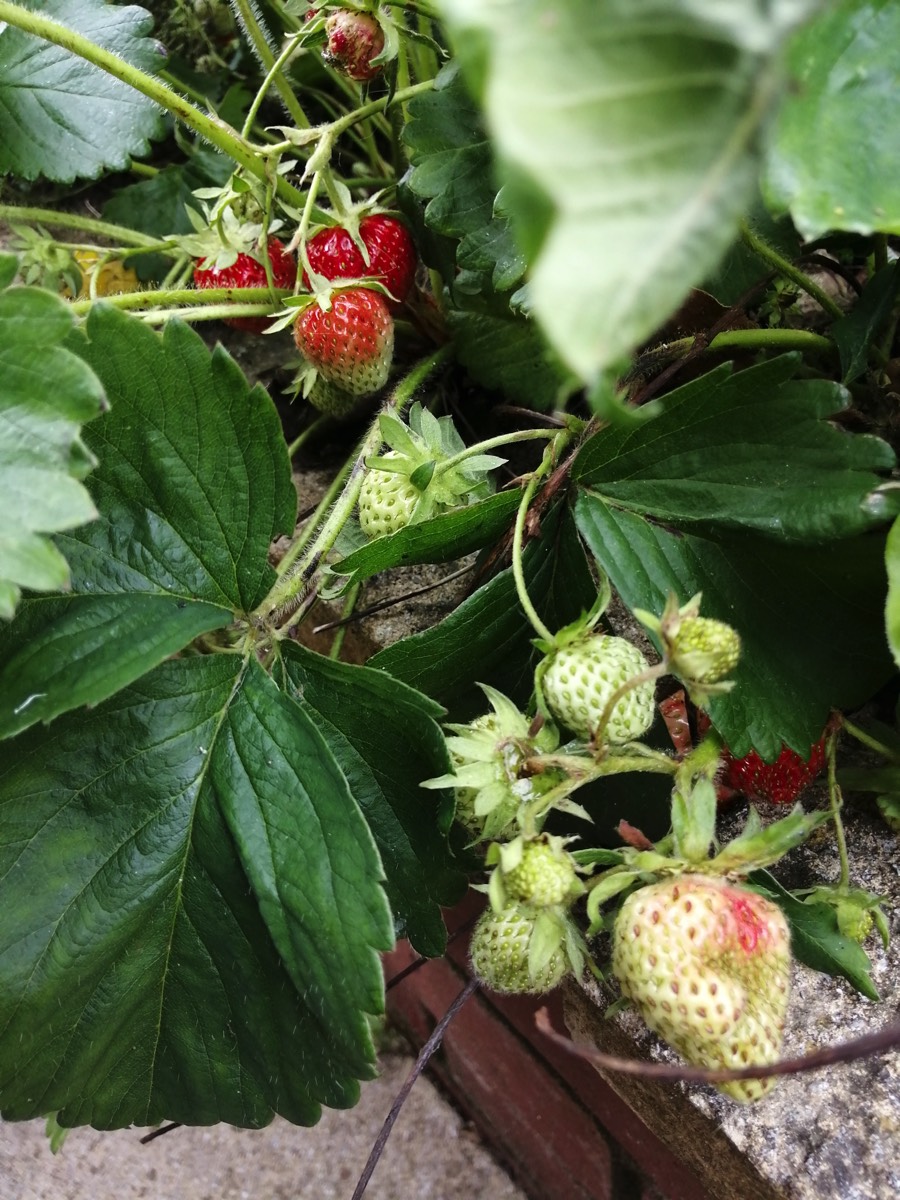
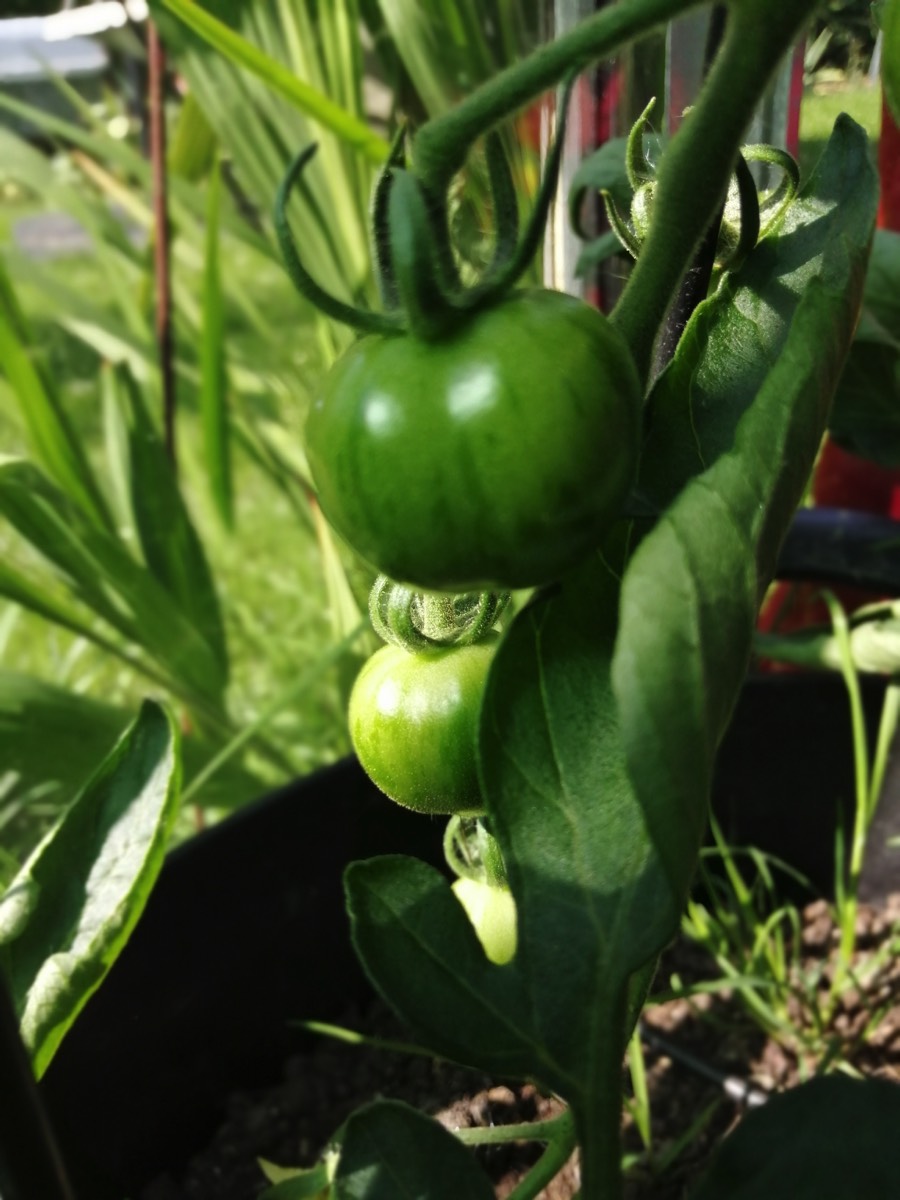
Left, swelling strawberries; right, young tomatoes.
Fruiting plants, like strawberries, peppers and tomatoes and those with juicy seeds like peas and beans, need plenty of water as the fruit / seeds begin to swell. However, letting the soil get dry and then soaking it can make the fruit split or cause problems like blossom end rot where the base of the tomatoes rots away. Keep the soil consistently damp. Mulching the surface, i.e. covering it with something like compost, grit, straw or woodchip, helps keep the moisture levels steady by reducing evaporation.
How to Water Well
We are so used to a plentiful supply of drinkable tap water that it is easy to forget that every drop is filtered, using up large amounts of energy in the process. Try to use rain water as much as possible if you have space for a water butt (or two, or more). In the summer, save your washing up water in a bucket to cool before using it to water your plants, but use an eco-friendly washing up liquid to avoid contaminating your soil with damaging chemicals. Remember, plants don't need their water to be sparkling clean, in fact the life in your water butt will add to the bio-diversity in your soil. Also, some acid loving plants, like blueberries, actively dislike the alkalinity of tap water.
Plants need a steady supply of water from moist, not soggy, compost or soil. The water needs to get to the roots, so there is no point in hosing a large surface area with huge amounts of water; most of it will be beyond the plants’ reach or will evaporate. If you do need to use a hose, it’s better to use a soaker setting on the spray head and leave it next to the stems, dribbling slowly for a long time. Set a timer so you don’t forget to come back!
It’s amazing how long it takes to rehydrate dry compost or soil so, if you are not sure whether you've watered enough, stick in a finger or trowel and test it. How far down has the water penetrated? Often you’ll find a soggy centimetre of compost sitting on top of total dust. To help the water penetrate, try sticking your finger or a stick into the surface to make small wells, which will catch the water and draw it down. Use a trowel to scrape soil into a ridge around each stem, or along each side of a row, to funnel water towards the plants.
Plants need a steady supply of water from moist, not soggy, compost or soil. The water needs to get to the roots, so there is no point in hosing a large surface area with huge amounts of water; most of it will be beyond the plants’ reach or will evaporate. If you do need to use a hose, it’s better to use a soaker setting on the spray head and leave it next to the stems, dribbling slowly for a long time. Set a timer so you don’t forget to come back!
It’s amazing how long it takes to rehydrate dry compost or soil so, if you are not sure whether you've watered enough, stick in a finger or trowel and test it. How far down has the water penetrated? Often you’ll find a soggy centimetre of compost sitting on top of total dust. To help the water penetrate, try sticking your finger or a stick into the surface to make small wells, which will catch the water and draw it down. Use a trowel to scrape soil into a ridge around each stem, or along each side of a row, to funnel water towards the plants.
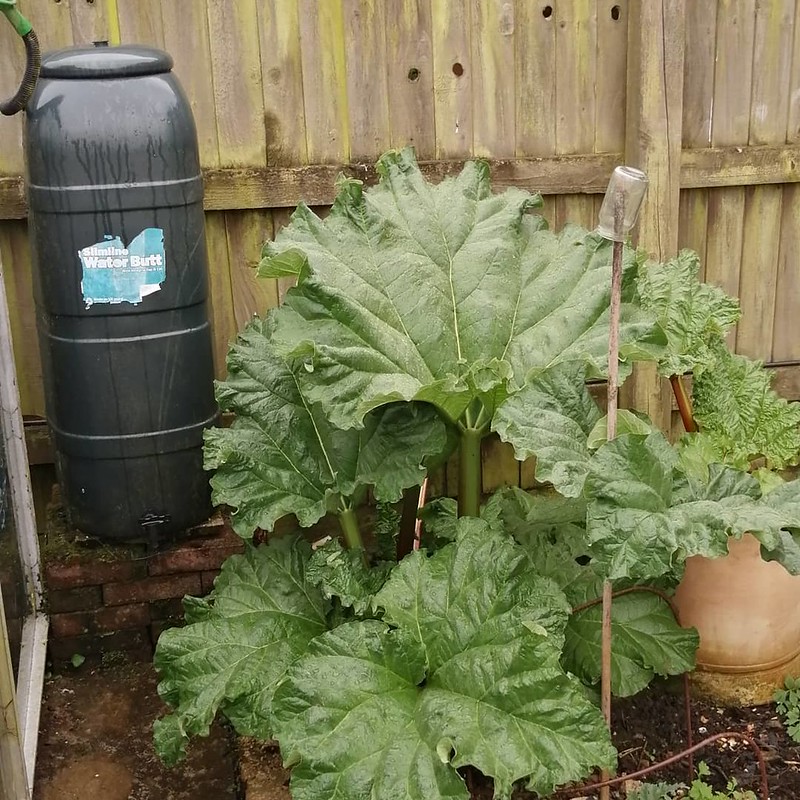
Water butts and connector kits are cheap and you can often find them in supermarkets during the summer. Place them near your plants. This butt is collecting rain from my greenhouse roof and the rhubarb loves the dampness from the overflow. I have made a simple stand from stacked bricks.
Growing in Containers
Containers are often recommended as being ideal for beginners but beware, they can be hard work!
Plants in containers need checking daily as they dry out very quickly. For plants like tomatoes this is disastrous as they can't cope with wild swings in moisture which cause the fruit to rot or split. Small plant pots may need watering twice a day during hot weather and all your hard work can be undone with just an unluckily hot weekend away. Bigger pots are easier to keep moist, so go as big as you can and think about setting up some self-watering pots. These needn’t be expensive as you can make your own quite simply and cheaply. Try The Vertical Veg site for instructions and much more advice on container growing.
Hanging baskets tend to dry out particularly quickly and need watering twice a day during hot summers. Reservoirs reduce this workload and give a long, slow release of water instead of intermittent soakings. Buy purpose made terracotta units, watering spikes, or cut a small plastic drinks bottle in half, and bury the top half (without the lid) so that the rim is just sticking out above the compost. You can then fill this with water quickly and it will be channelled straight down deep where it is needed.
Plants in containers need checking daily as they dry out very quickly. For plants like tomatoes this is disastrous as they can't cope with wild swings in moisture which cause the fruit to rot or split. Small plant pots may need watering twice a day during hot weather and all your hard work can be undone with just an unluckily hot weekend away. Bigger pots are easier to keep moist, so go as big as you can and think about setting up some self-watering pots. These needn’t be expensive as you can make your own quite simply and cheaply. Try The Vertical Veg site for instructions and much more advice on container growing.
Hanging baskets tend to dry out particularly quickly and need watering twice a day during hot summers. Reservoirs reduce this workload and give a long, slow release of water instead of intermittent soakings. Buy purpose made terracotta units, watering spikes, or cut a small plastic drinks bottle in half, and bury the top half (without the lid) so that the rim is just sticking out above the compost. You can then fill this with water quickly and it will be channelled straight down deep where it is needed.
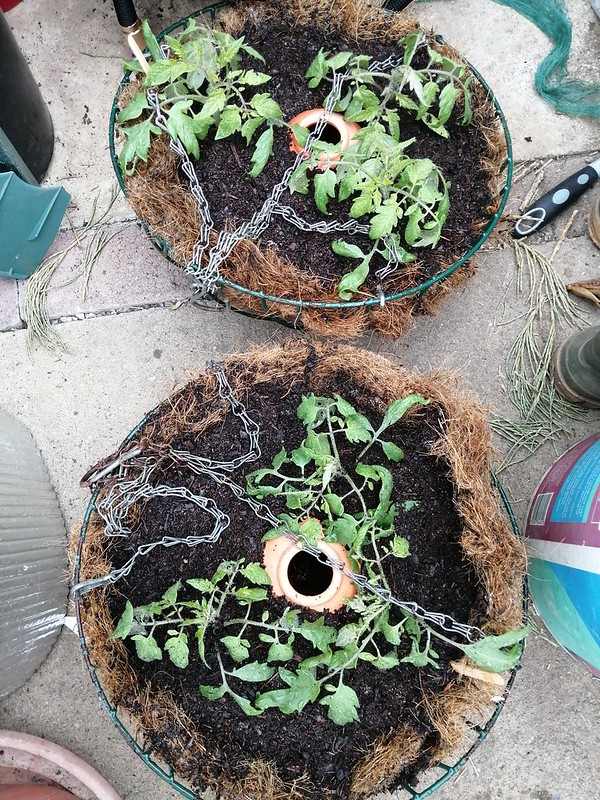
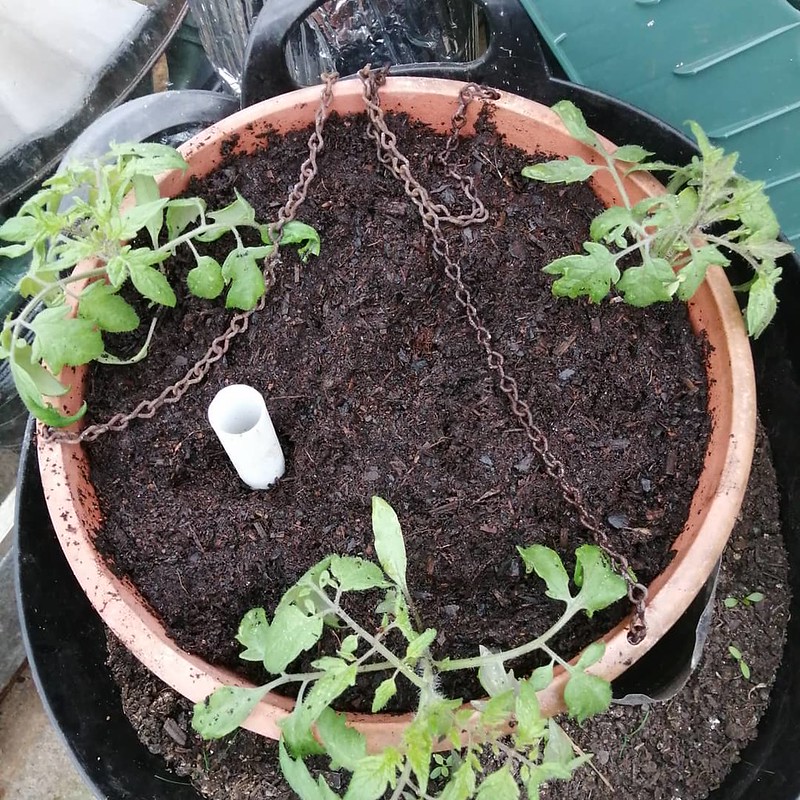
Left, hanging baskets with terracotta watering vessels sunk into the middle.
Right, a hanging basket with a built in reservoir below. The pipe allows you to fill it quickly.
These are Tumbling Tom tomatoes, a small variety bred especially for containers.
Right, a hanging basket with a built in reservoir below. The pipe allows you to fill it quickly.
These are Tumbling Tom tomatoes, a small variety bred especially for containers.
Place your containers on trays to catch the water as it runs through so that none is wasted and excess can be soaked back up. If you have several pots close together in a greenhouse or conservatory, place them in one large shallow tray lined with capillary matting to hold more water. Add a layer of sharp grit over the matting to reduce water loss through evaporation and make sure the base of the pot is in contact with the matting.
Many houseplants struggle with dry air in heated rooms and show this with brown edges to their leaves. Keep a mister spray to help with this or, if you have room, place plants in groups where they will create their own little humid micro-climate.
Never leave plants in containers with their bases in standing water. Tip away any excess that has not being sucked up within half an hour or so. If your compost becomes waterlogged there will be no air pockets so the plant will ‘drown’. Very wet compost also encourages moulds, which can kill your plants. Seedlings in particular are very prone to 'damping off' in cold wet compost, a fancy term for flopping over and dying when mould rots their stems.
Feed While You Water
For plants growing directly in the ground the organic mantra is always, ‘Feed your soil, not your plants.’ Annual applications of compost or manure will not only help your soil to hold on to more moisture (and drain better), it will also provide nutrients in a slow release form, so no liquid feeds are necessary. See my Love Your Soil page for more on this.
For any plant in a container, adding liquid feed when you water (or using house-plant feed sticks which slowly dissolve with each watering) at least once a week during spring and summer is vital as the plant’s roots cannot spread out or dive deep in search of nourishment. Many problems with plant pests and diseases originate in sickly plants that are starved of nourishment and so are unable to fend off attacks. Mint is a classic example; people plant it in small pots to avoid it taking over their beds and find that it grows slowly, very tough and sometimes with a nasty black mould. Mint needs lots of water and, as a leafy crop, plenty of nitrogen-rich feed for lush green leaves. Some plants turn yellow as they starve, or in some cases dark red, as without the necessary nitrogen they are unable to generate the chlorophyll pigment that makes leaves green. Regular feeding prevents these problems and, if you have difficulty remembering when to feed, try the mantra, ‘Feed on Friday.’
To make your own liquid feed for free, plant a comfrey patch or harvest young nettles, soak the leaves in a bucket of water for a fortnight (with a lid to contain the smell) and dilute to the colour of weak tea.
For any plant in a container, adding liquid feed when you water (or using house-plant feed sticks which slowly dissolve with each watering) at least once a week during spring and summer is vital as the plant’s roots cannot spread out or dive deep in search of nourishment. Many problems with plant pests and diseases originate in sickly plants that are starved of nourishment and so are unable to fend off attacks. Mint is a classic example; people plant it in small pots to avoid it taking over their beds and find that it grows slowly, very tough and sometimes with a nasty black mould. Mint needs lots of water and, as a leafy crop, plenty of nitrogen-rich feed for lush green leaves. Some plants turn yellow as they starve, or in some cases dark red, as without the necessary nitrogen they are unable to generate the chlorophyll pigment that makes leaves green. Regular feeding prevents these problems and, if you have difficulty remembering when to feed, try the mantra, ‘Feed on Friday.’
To make your own liquid feed for free, plant a comfrey patch or harvest young nettles, soak the leaves in a bucket of water for a fortnight (with a lid to contain the smell) and dilute to the colour of weak tea.
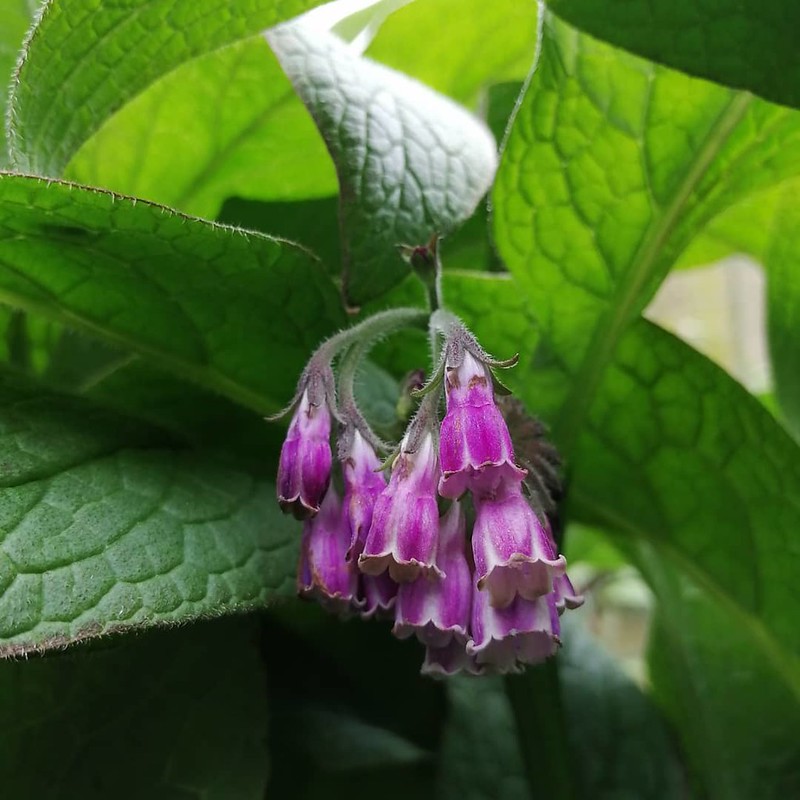
Comfrey: a magnet for bees and the best source of balanced liquid plant food. Buy the variety Bocking 14, which is sterile and so won't seed over the rest of your garden.
Sowing Seeds or Planting Out in Dry Weather
Seedlings and plants that have just been transplanted need to be kept moist until they are well established and have lots of roots. When sowing seeds or transplanting, fill the hole or seed trench with water and let it drain away before planting / sowing. Water again once the seed / plant is in the soil but use a watering can with a rose so that you don’t wash the seeds away with a sudden rush of water.
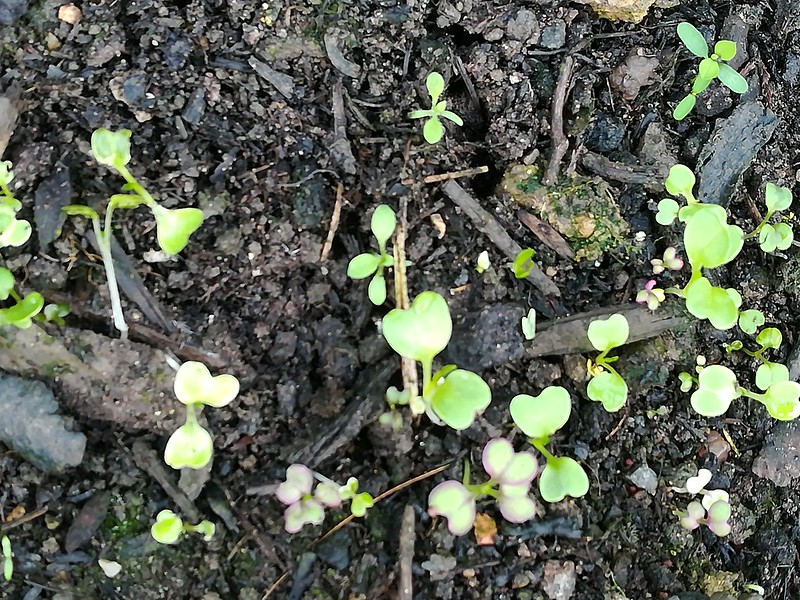
Mixed lettuce seedlings growing up through a mulch of home-made compost.
If it's All Still Too Much, Try a Terrarium!
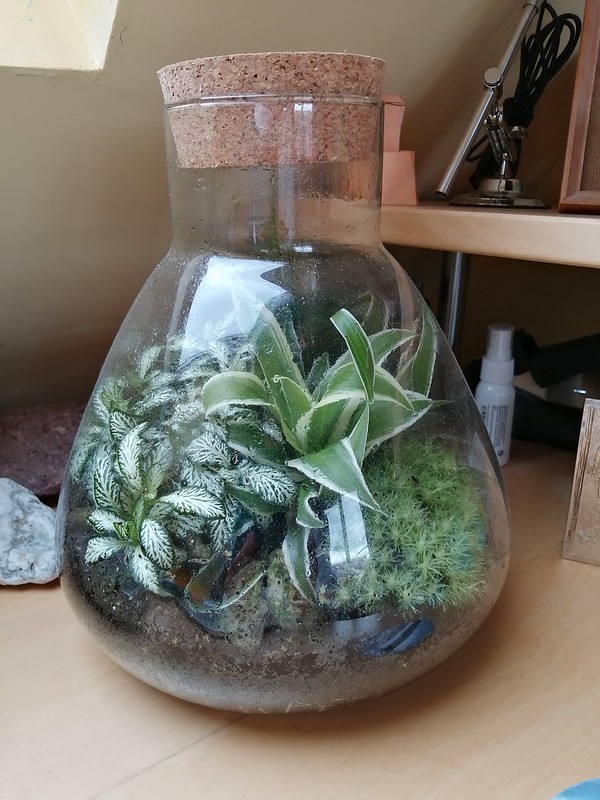
My terrarium, a no-maintenance rainforest on my desk.
If you enjoy growing indoors, or want to start with a really simple no-energy project, check out your local garden centre for a terrarium. This is a garden in a glass bottle, which is sealed with a cork to create a completely self-contained eco-system. It never needs either watering or feeding.
The plants draw water and nutrients up from the compost through their roots to grow. The water evaporates from their leaves and then condenses on the glass walls, leaves and stems, returning to the compost without being lost into the atmosphere. Gradually, as some of the leaves die, they compost down into the soil and the nutrients they contain are recycled.
Being a sealed system it has no problems with pest infestations. I have had one on my desk now for over a year and have not needed to touch it. It is lovely to watch this mini-universe change day by day as I sit and write.
My illness has meant that I have had to give up my work and so I am now looking to find a new career through my writing. If you have enjoyed this page and would like to encourage me to produce more, click the coffee cup below to make a small donation; no strings, no fuss, just a little, 'Thanks, keep it up.'
You can also help by sharing this page on your social media.

